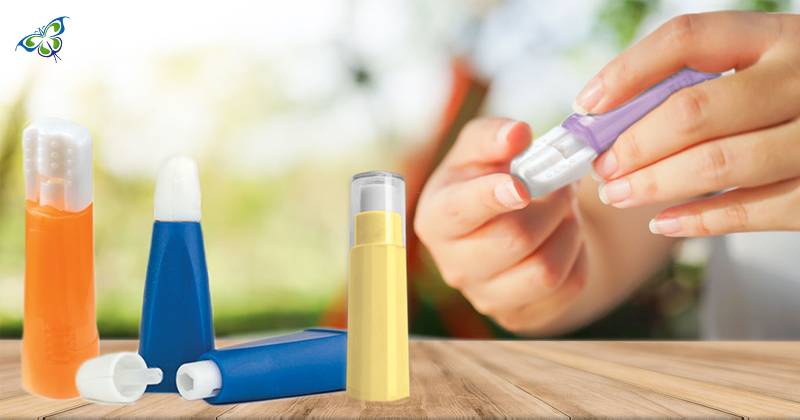
Hello
Select Address

If you don’t have a history of diabetes in your family, or rather, if you do not have much knowledge about this sickness to date, you are not quite familiar with a lancing device. Before answering a set of questions on what lancing devices or lancets are, it is essential to have an overview of lancets.
A blood lancet is a device for blood sampling. Precisely, you will be able to do your own capillary blood sampling and is, therefore, mostly used by diabetics for their blood glucose monitoring purposes. The idea behind creating such a device is that you can prick your skin without feeling pain because the duration would be so short that your nerves would not sense it and you would not feel the prick at all!
How far should the needle shoot out in a lancing device?
Most lancing device has a gauge that controls how far the needle shoots out. It completely depends upon the model that you are using as to how many levels (of shooting out the needle) is available in your device. Generally, levels 5 to 9 are most used. however, since the goal is to get the work done in minimum or no pain, it’s up to an individual where the level is set.
Which part should the lancing device be used ideally?
The most used site is the fingertips. This is commonly known to most of us here. Nevertheless, the FDA approves testing from many alternative sites. It could be the forearm, your leg or the palm of your hands too!
Blood sugar testing is one of the very first steps in controlling abnormal glycemic levels. Patients who try to control their blood sugar levels with either medication or lifestyle changes need to stay under regular glucose monitoring. A lancet and the lancing device helps in doing so conveniently. The lancing device closely resembles a modern sewing machine. It helps to push a small needle (called lance) very, very quickly and again make it retract almost in that same instant! The duration is negligibly short to make the entire process nearly painless.
You can use a lancet simply to get a blood sample. It is not mandatory that you must get a lancing device to 'prick the needle'. Nevertheless, a lancing device only makes the job easier. It aids in making the punch of the needle in your skin so 'instant' that the nerve endings do not realize the pain!
How to use your lancet?
The following steps could walk you through the correct procedure of lancet use:
If you ask someone from the manufacturing company of the device, you’ll be surely advised to change it after every use. The more you consume the more their pockets are filled! But is that practically possible? Surely not! Well, if you are pricking your fingers say, 6 times a day, you could be up for a daily change. Most diabetics change lancets once every week and some do it after a fortnight.
The frequency of changing lancets is not a very significant issue. It is required only to keep infections away. Also, lancets often get dull with reuse. When you feel that the prick is no longer quick and more blood is oozing out with each prick, you must change your lancet.
Read More on: Lancets for diabetes
With the use of modern and advanced gadgets comes the responsibility of handling them accurately. Discarding lancets is one of the most important things to be considered. These sharp ones must preferably be discarded in containers (some old juice bottle or milk jug).